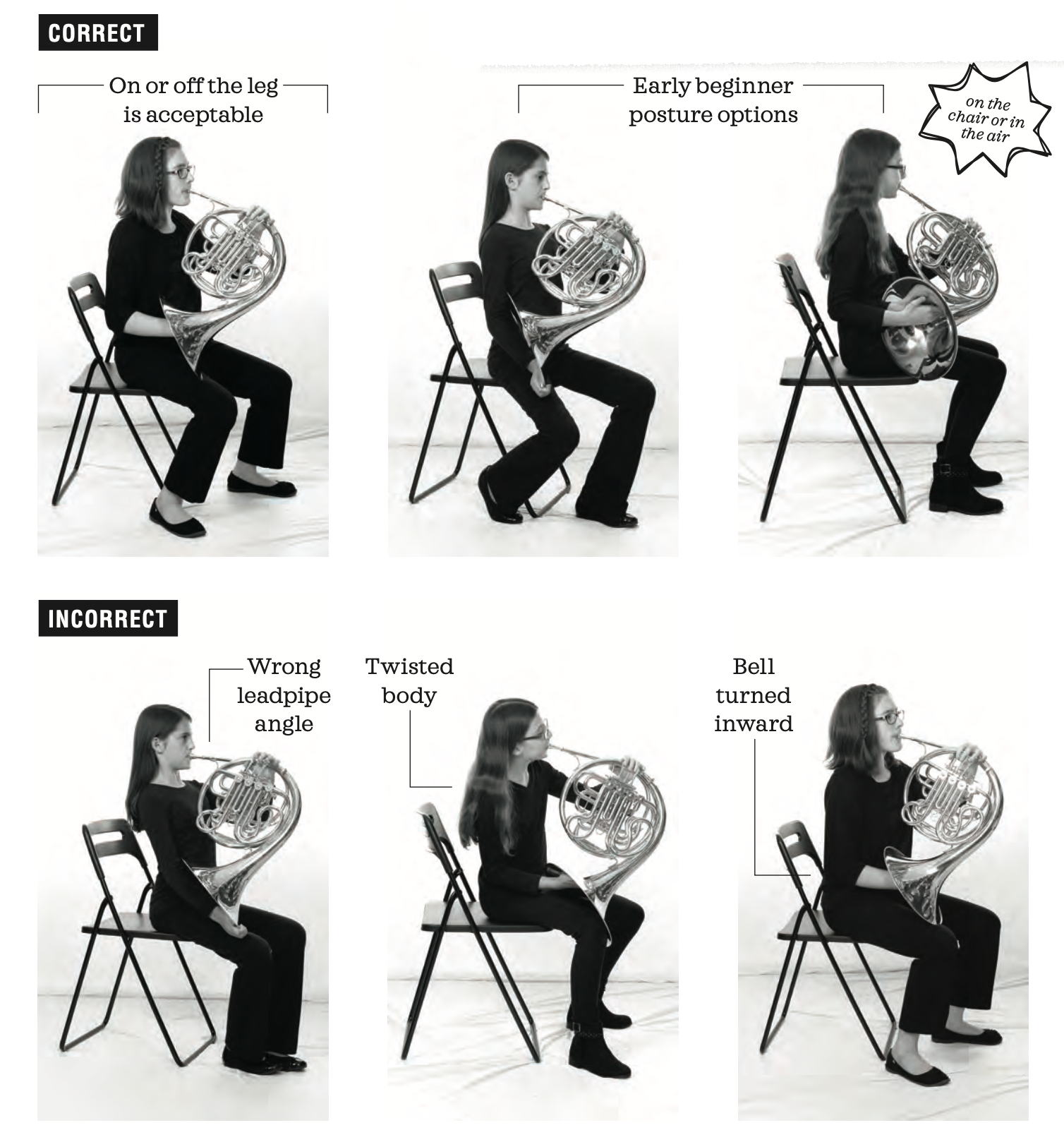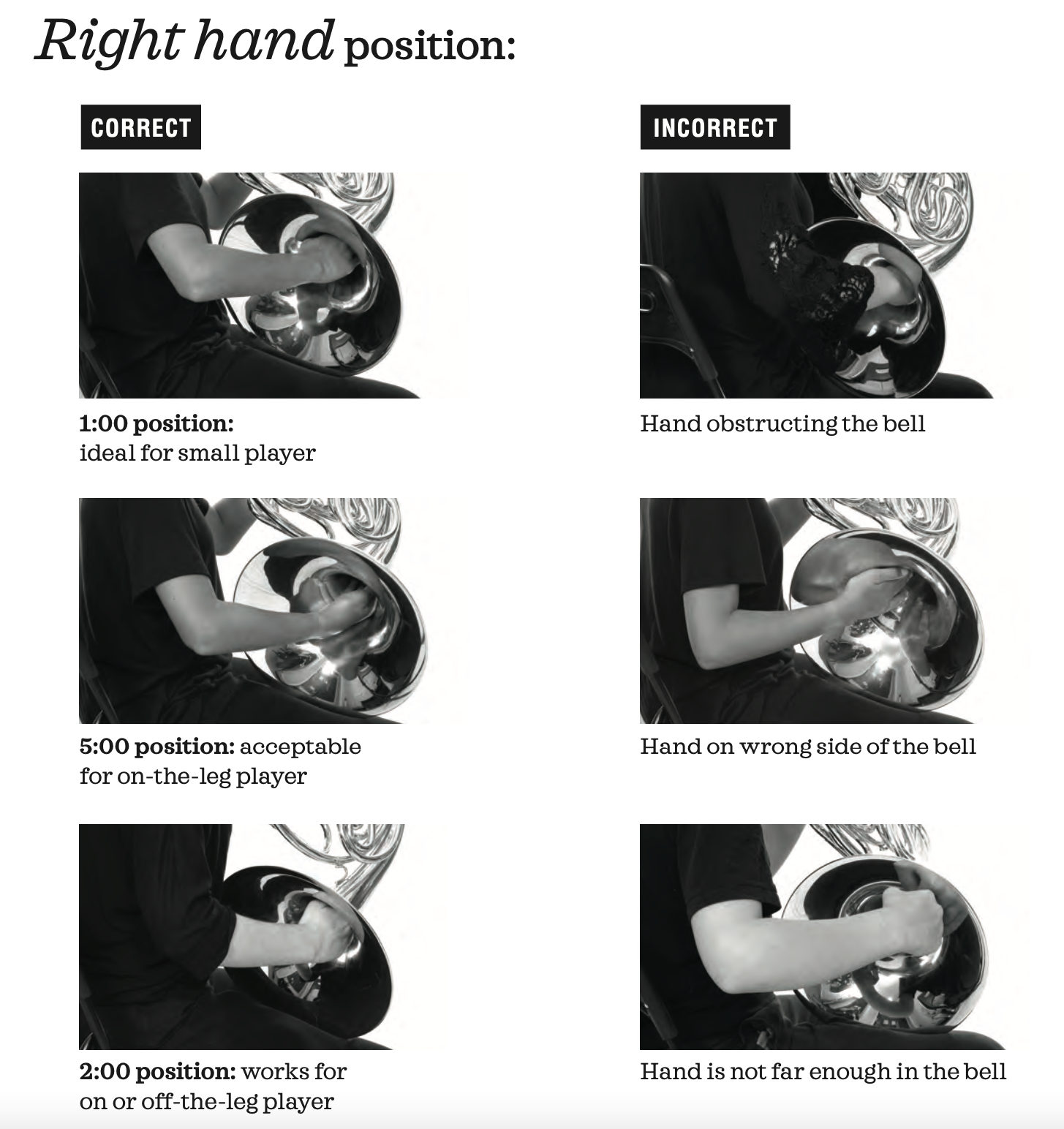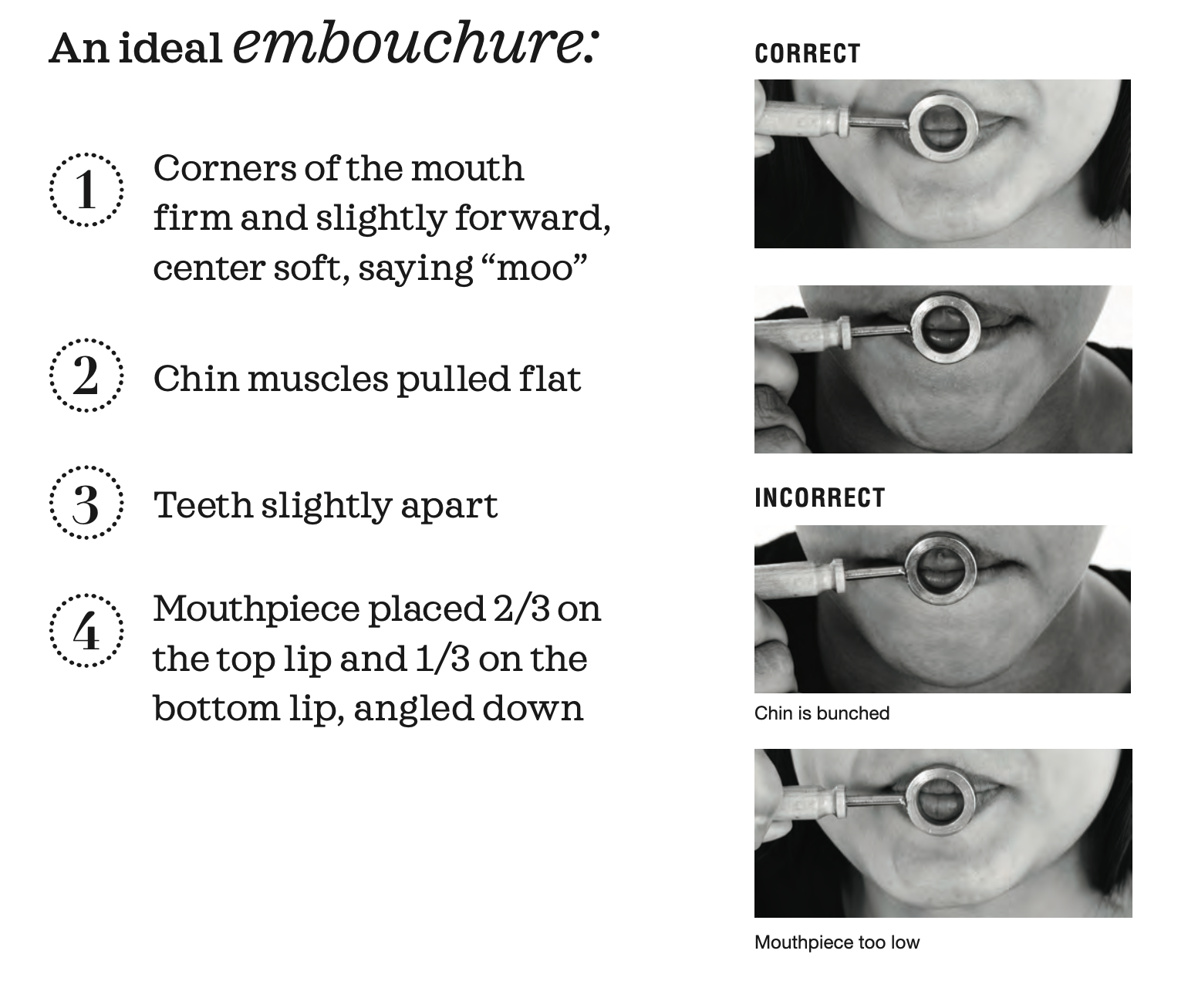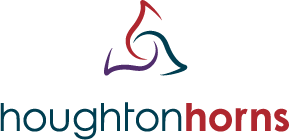Getting started on the horn
Posture points:
-- Sit with a straight spine and relaxed body.
-- Legs should be apart, with your right foot on the right side of the chair. Point your left foot straight ahead.
-- Position your right elbow slightly away from your body.
-- Your left fingers should be curved on the keys and your pinky in the finger hook.
-- As a beginner, you should choose a right-hand position that doesn't obstruct the opening. (Your permanent right-hand position will be introduced later. See Right-hand position below)
-- It is very important to bring the horn to you and not bend your body to the horn. This may be best achieved by playing with the bell off the leg.
-- The leadpipe should be centered to your body and angled down to allow the top lip to vibrate freely. As a beginner, this may mean that you need to adjust your bell and/or right leg to accommodate the placement of the leadpipe and mouthpiece. The downward leadpipe placement should match the angle of the teeth (bite).
Chef's Note:
The valve levers may need to be lowered and/or the finger hook moved in order to match hand size.
Chef's Note:
The early beginner posture/hand position may be used for a couple of months to give the student time to focus on developing correct embouchure. When the right hand is out of the bell, the pitch will be very sharp. The main tuning slide should be pulled generously for ear development. Accurate tuning cannot be achieved until the hand is in the permanent position in the bell.

Right-hand position
Right-hand position needs to be fairly flat, with your fingers together. The back of the fingers should remain in contact with the inside of the bell. The thumb should rest against the index finger (think "karate chop"). Your hand needs to be inserted far enough to serve as an extension of the bell throat. This will help focus the air column. Your right hand, clothing, or body should not obstruct the opening. An acceptable hand position can be between one and five o'clock (see graphic). The exact position will depend on your size and whether you play on or off the leg.

Chef's Note: Hand Position Help
- FLATTEN HAND: A flat hand position will prevent a closed hand sound. There should be room for a golf ball or small orange to roll past the hand.
- ALIGN WITH BRACKET: For a smaller student, the thumb or index finger needs to be under the bracket on the bell. This helps them identify the correct location for their hand.
- TAPE GUIDE: If they continue to have trouble, a piece of painter's tape can be made into a flap and attached to the inside of the bell. This can be grasped between the thumb and index finger.

Chef's Note:
Though professional horn players vary in right-hand position, all agree that the hand should be inserted far enough into the horn to control pitch and tone without obstructing the bell opening.
Embouchure tips:

Chef's Note:
Although attention should be given to visually establishing a correct embouchure, some students will do this naturally. In that case, it need not be emphasized until a problem occurs. As teachers of beginners, we encourage you to strive for a "textbook embouchure" with every student. This can usually be achieved by careful monitoring on your part, while asking the student to use sufficient air and good listening skills.
Source: Recipe for Success, Chapter 2, pages 13-17

